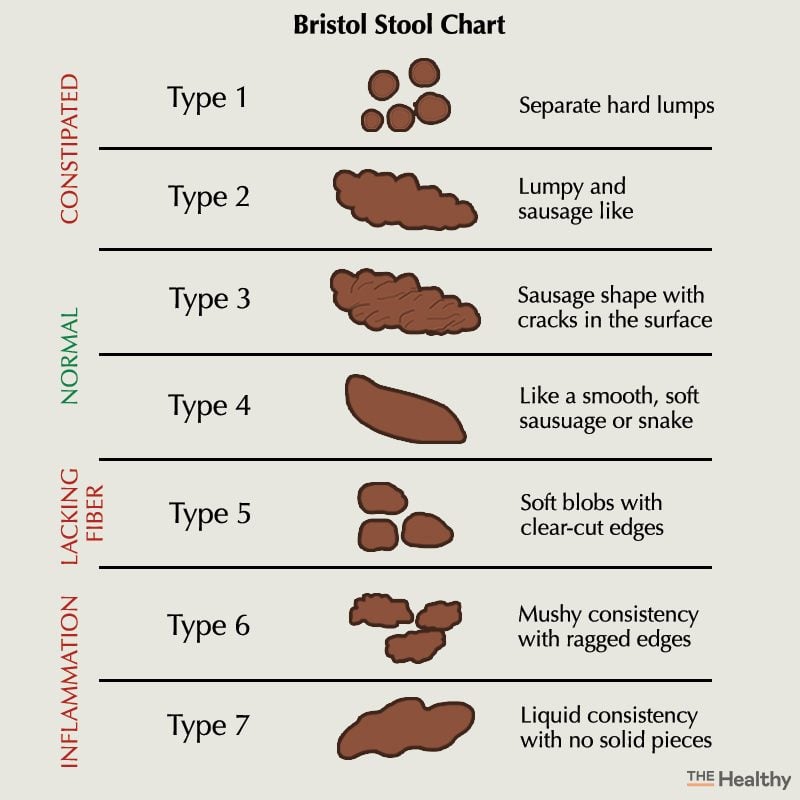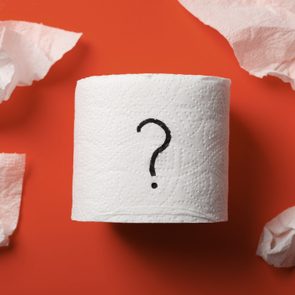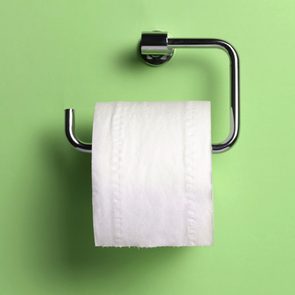Here’s How Often You Should Poop, Plus 8 Signs of Digestive Problems
Updated: Oct. 10, 2022
There's no magic number for how often you should poop, but your bowel movements say a lot about your health. Here's what to know about diarrhea, constipation, and other digestive problems.
Our editors and experts handpick every product we feature. We may earn a commission from your purchases.
Understanding your bowel movements
Some people just love to talk about their poop. Don’t believe us? There are whole websites and online communities devoted to the topic.
Others are way too squeamish to even say the word “poop” out loud. But like the classic children’s book of the same title says, Everyone Poops.
And unfortunately problems with pooping are nearly universal too. If you are pooping too often or not often enough—as can happen with diarrhea or constipation—it can make you miserable.
What exactly is a bowel movement? It’s essentially the last stop food makes as it travels through your digestive tract, and it contains a lot of indigestible bits of food and bacteria, including the normal types that help digestion.
“Surprisingly, more than half our stool is dead or not-so-dead bacteria, and the rest is leftover indigestible parts of our food like shell bits or bone fragments,” says Scott David Lippe, MD, a gastroenterologist at New Bridge Medical Center in Paramus, New Jersey.
How often should you poop?
Clearly what you eat and drink affects when and what you poop, but is there a magic number for how often you should go?
“The perfect scenario is that you wake up, have a bowel movement and you’re done for the day, and then the same thing happens the following day and every day thereafter,” says Mark Pimentel, MD, a gastroenterologist at Cedars-Sinai Medical Center in Los Angeles.
But don’t worry if this isn’t what happens in your bathroom day after day, he says.
“Textbooks tell us that the range of normal can be up to three bowel movements per day or once every three days,” Dr. Pimentel says. That’s a pretty wide range.
What’s normal for you has a lot to do with how you feel.
“If you don’t feel unwell, one bowel movement every two days is OK if that is your pattern, but if there is a change in your bowel habits that is causing bloating or other symptoms, it may be worth checking out,” he says.
What does your poop look like?
What your poop looks like can also be an indicator of your underlying gastrointestinal health. “It should be solid and cylindrical with a few cracks and just take a few wipes to clean up,” says Dr. Pimentel.
There’s even a chart that doctors use to determine how ‘normal’ your stool looks. The Bristol Stool Chart shows various shapes and sizes of stool, ranging from hard to liquid, Dr. Lippe says. “The ‘normal ones’ are in the middle, but everyone has different stools.”
Your poop may not always look the same, Dr. Pimentel adds. Animals tend to consume the same diet day in and day out, so their stool often looks the same, but this isn’t true with humans.
“One night, you eat Greek food and then you have Indian cuisine the next night. That is fantastic for your palate, but not necessarily for your gut,” he says.
It’s a good idea to check out the toilet paper after you wipe and look in the toilet before you flush, he says. A poop’s color, like yellow or green stool, can tell you a lot about what you ate or if you are having a health problem.
(Here are some weird pooping habits, explained.)

Signs of digestive problems
There are some red flags that warrant a visit to your doctor that could affect how often you poop. Keep an eye out for these eight signs.
Constipation
Constipation is defined as having three or fewer bowel movements in a week. If you are constipated, your stool may also be hard, dry, and painful to pass. (Constipation can even cause low back pain.)
If you recently switched to a low-carb or keto diet, you may become constipated. The diets tend to be high in protein, but very low in fiber. Fiber increases the bulk and size of your stool, and makes it easier to have a bowel movement. However, most of us don’t get nearly enough fiber. (Here are low-carb diet mistakes that people make.)
How much fiber do you need? Men should aim for about 38 grams of fiber a day, and women about 25 grams, according to the National Institutes of Health. (Here are the signs you have a low fiber diet.)
It’s not enough to just eat more fiber, though. It’s also important to drink enough water to help stool pass, Dr. Pimentel says.
Don’t spend too much time sitting on the bowl and waiting for a bowel movement, adds Dr. Lippe.
“It is recommended to sit and go and be done,” he says. “No one should sit for prolonged periods of time as it will lead to hemorrhoids and/or abnormal veins.”
Sometimes constipation is a result of irritable bowel syndrome (IBS), Dr. Pimentel says. “You could eat more fiber and use a laxative like MiraLAX if the IBS constipation is mild, but if it is clinically advanced, we want to treat the cause, not the symptoms,” he says.
(Here are surprising home remedies for constipation relief.)
Diarrhea
On the opposite end of the spectrum is diarrhea, or loose, watery stool. This can be caused by a virus, but there are many different causes of diarrhea.
When diarrhea lasts less than two weeks, it is considered ‘acute.’ By contrast, chronic diarrhea lasts longer than four weeks, according to the American College of Gastroenterology.
Bloody diarrhea (more on this later), may be a sign of inflammatory bowel diseases like Crohn’s disease or ulcerative colitis, which are autoimmune conditions that damage the digestive tract. IBS can also cause diarrhea.
Diarrhea can lead to dehydration, so be sure to drink plenty of liquids, like broth or sports beverages. Over-the-counter medications may also control symptoms. Sometimes antibiotics are needed. Your doctor may also recommend a very bland diet such as the BRAT diet (bananas, rice, applesauce, toast).
If you have Crohn’s disease or ulcerative colitis, you may need to take anti-inflammatory drugs, antidiarrheal medications, and laxatives, make lifestyle changes, or, in some cases, undergo surgery. If you have IBS and diarrhea, you may need antidiarrheal medication.
Thin stools
Skinny stools—they’ll look like a pencil—may suggest a narrowing or blockage that could be caused by cancer, like colon cancer. Poop may not be able to come out, or it may have a hard time coming out due to a blockage in the colon or rectum. (These are the colon cancer symptoms to look for.)
When the colon is blocked, the passage your poop takes out of your body is narrowed. The result: skinnier stool. Don’t panic, though. There are other reasons your stool may be thin. Talk to your doctor to get to find out the cause.
Floating stool
If your stool floats instead of sinking to the bottom of the bowl, it could mean that you have excessive amounts of gas, Dr. Lippe says. It may also be a sign you’re not absorbing nutrients properly.
Most of the time, floating poop isn’t a big deal, but if it doesn’t go away or if you’re also experiencing unexplained weight loss, book an appointment with your doctor.
Greasy stools
If there is oil in your stool, your body may not be able to digest fat. This can be due to celiac disease or a problem with your pancreas, an organ that is tasked with releasing enzymes that aid digestion, Lippe says. Other possible culprits include problems with your liver, gallbladder, or small intestine.
What are some other signs your poop qualifies as oily stool? You may have bulky, pale, and foul smelling stool.
It can be related to a particularly high-fat meal you ate, but when it’s a chronic occurrence, get it checked out by your doctor.
Mucus
Mucus in your poop implies irritation and inflammation of the colon. “This is never, ever normal,” Dr. Lippe says.
Talk to your doctor about regular occurrences of mucus in your stool, especially if you also notice bleeding or have had changes in your bowel habits.
Blood in your stool, in the toilet, or on the toilet paper
Healthy stools tend to be brownish, Dr. Pimentel says. Reddish or black stool may suggest bleeding. This may be due to tears in the anus, colon cancer, or precancerous polyps, among other conditions—although eating red foods, like beets, can also change the color of your stool. (Here are more possible causes of blood in your stool.)
In general, the darker the stool, the higher the bleeding in your gastrointestinal (GI) tract. In contrast, bright red blood suggests the blood is coming from very near your anus and could be a hemorrhoid or an anal fissure.
When it comes to bloody poop, it’s better to be safe than sorry. Talk to your doctor to make sure there’s nothing serious behind your bleeding.
A change in what’s normal for you
A change in bowel habits not readily explained by a change in diet or the start of new medications can be concerning.
“We are usually in a set pattern for very long periods of time, and an unexplained change is a concern,” says Dr. Lippe.
It can be a sign of IBS, IBD, celiac disease, and even colorectal cancer. If your pooping habits change, make a visit to your doctor to discuss.
The last word
Your poop reveals a lot about your health, and how often you have a bowel movement is one indicator. There’s a wide range of what is considered normal, and the biggest sign that something is not quite right is a change in your bowel habits that can’t be explained away by any changes in diet or other lifestyle factors.
Always look in the bowl before you flush, and let your doctor know about any bleeding or other issues.
Next, find out if holding in your poop is bad for you.






















